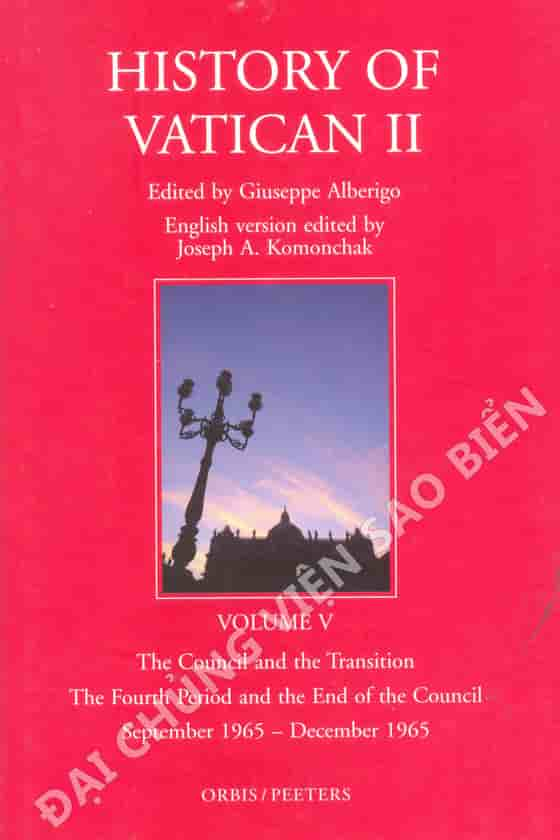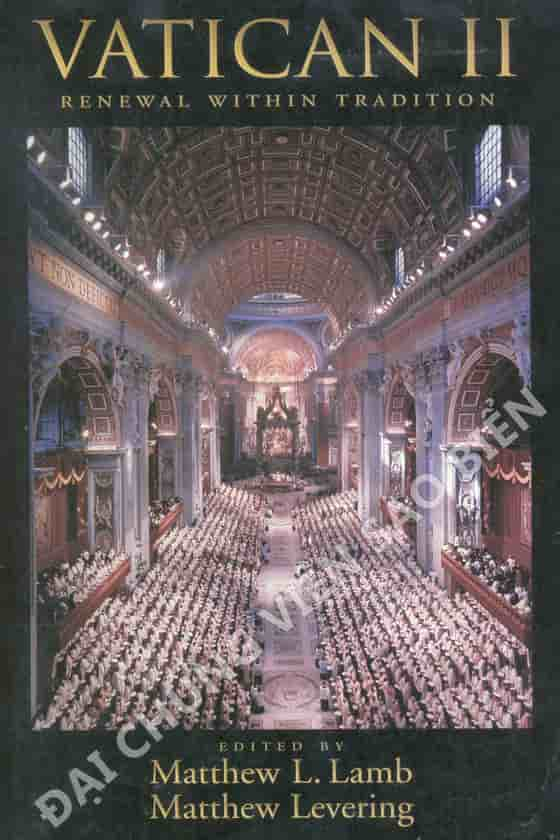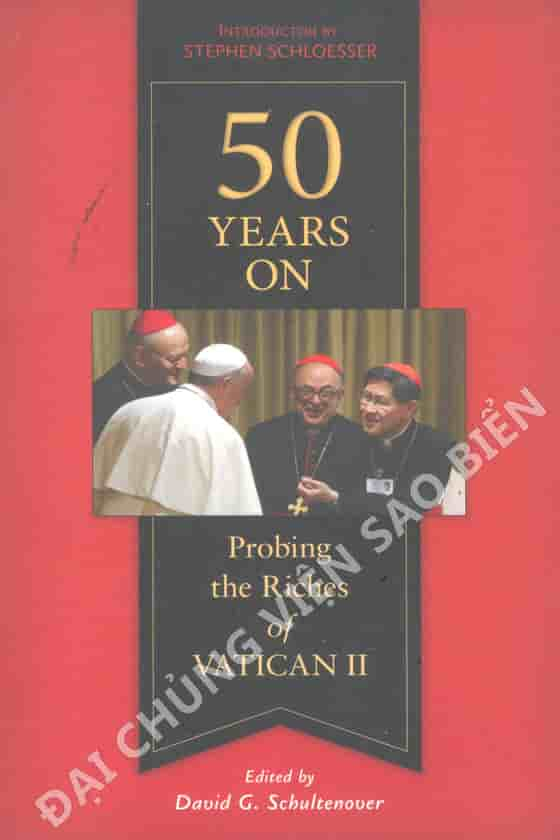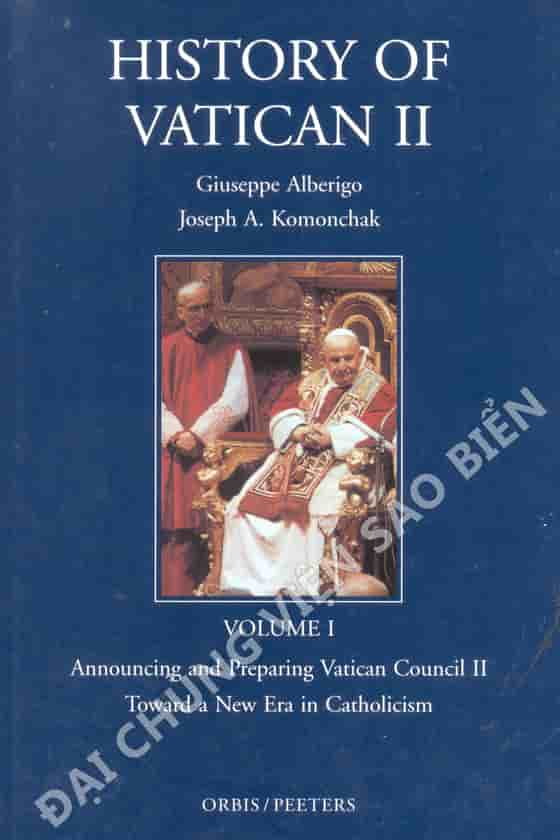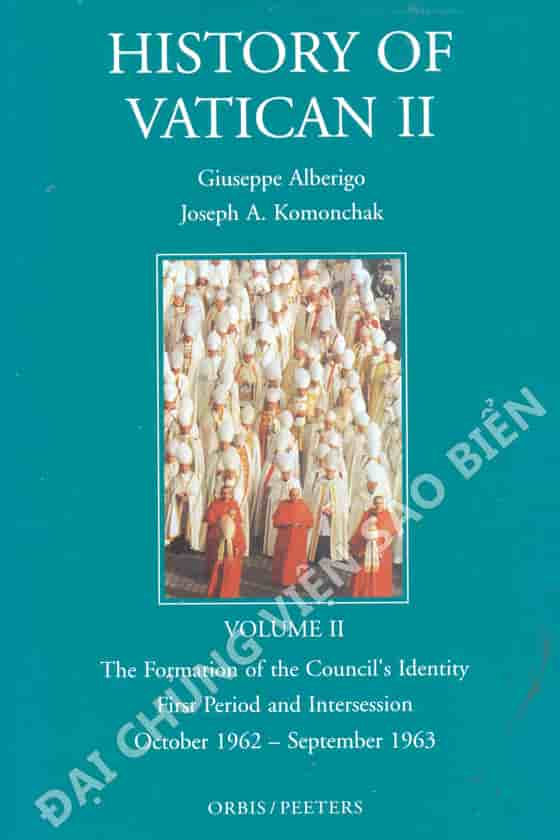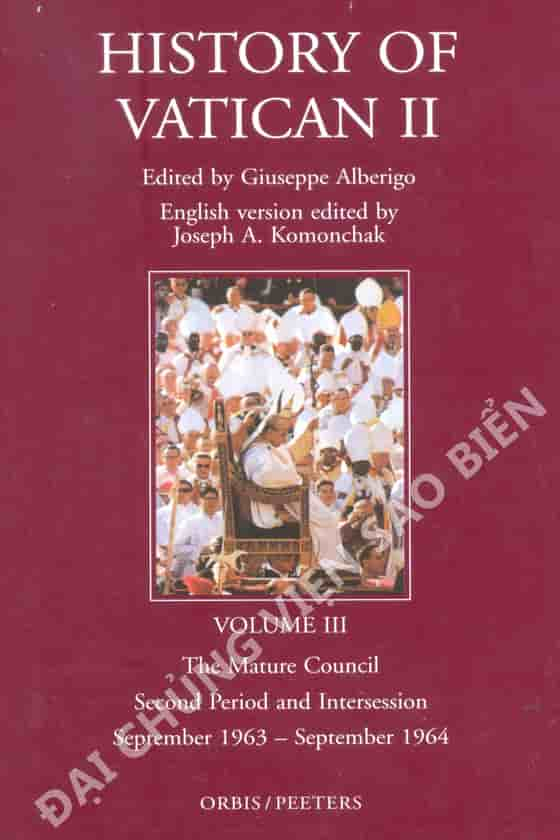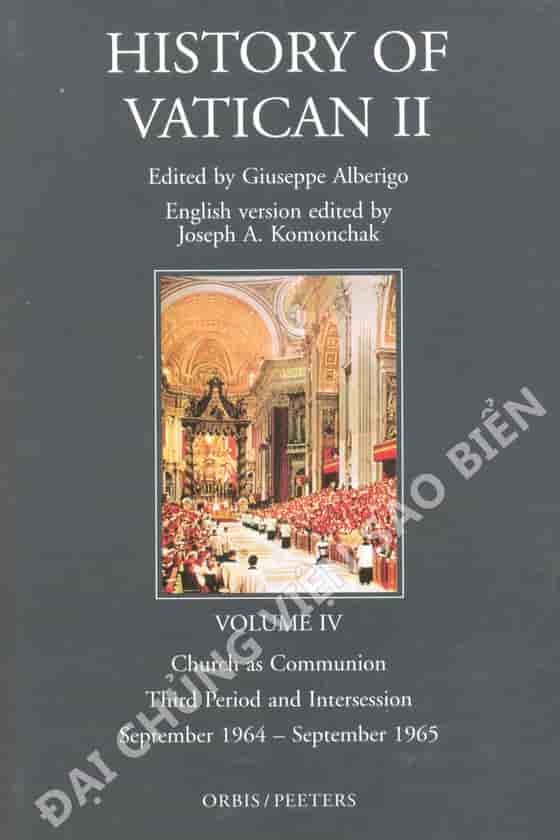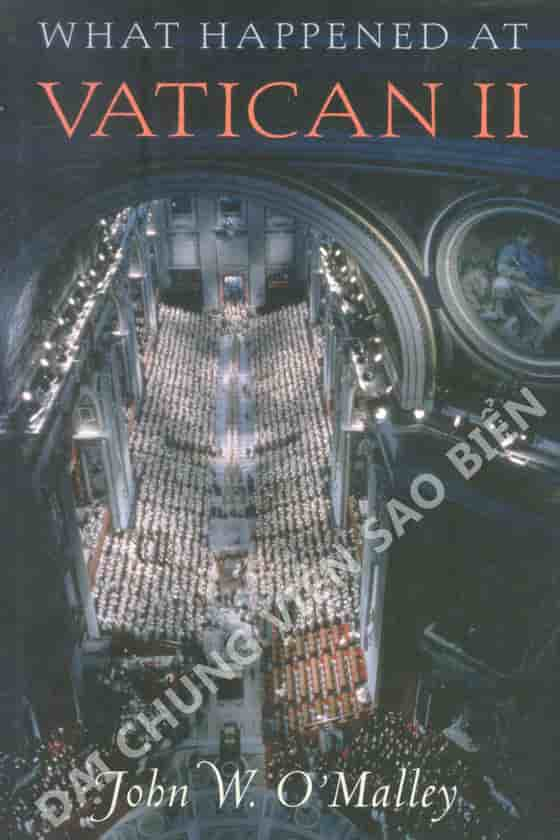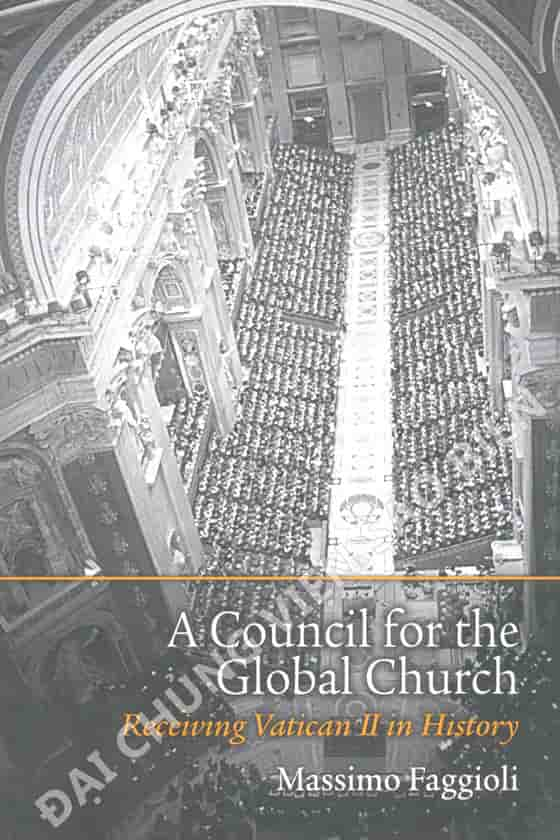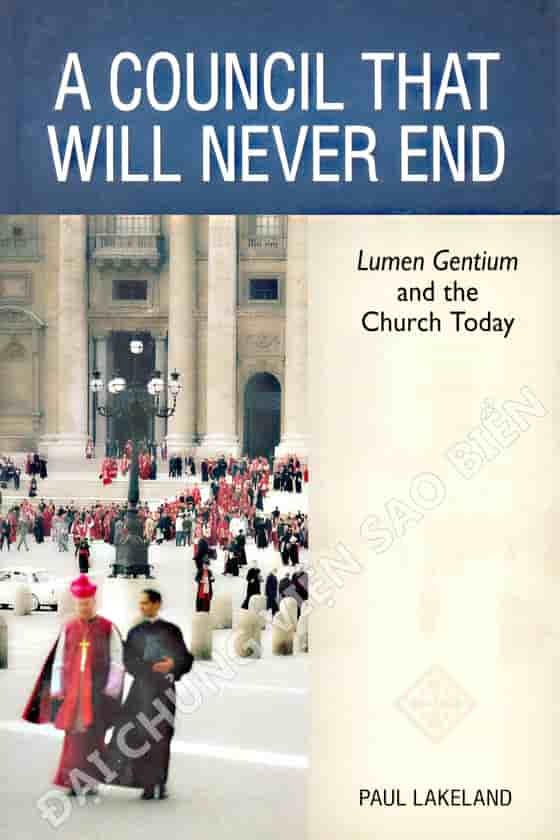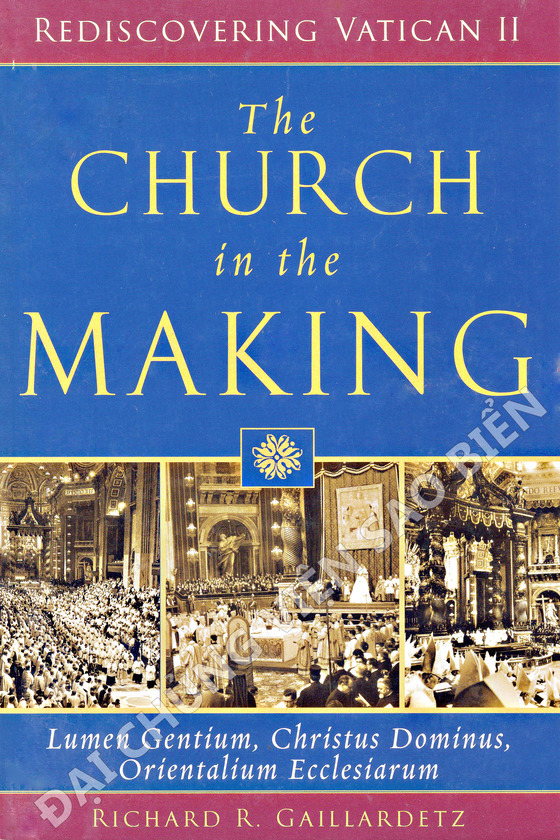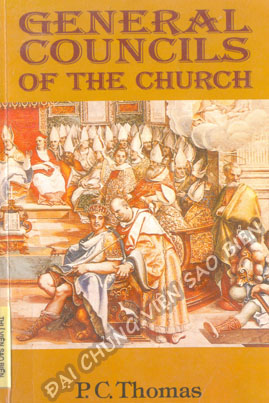| Preface |
XIII |
| ABBREVIATIONS AND SOURCES |
XIX |
| SOURSCES AND ARICHIVES |
XXIII |
| I. TOWARD THE FOURTH PERIOD |
|
| [GIOVANNI TURBANTI |
1 |
| I. The difficulties of the Initial Reception |
1 |
| A. Expectations od the New Conciliar Period |
9 |
| B. Activity of the Episcopal Conferences in Anticipation of the New Period |
14 |
| II. Paul VI and the End of the Council |
19 |
| A. Signs of Concern |
19 |
| B. The "Final" Period: Unvertaninties and Strategies for the Future |
23 |
| III. The Commissions Resume Their Work |
33 |
| A. The Coordinating Commission |
33 |
| B. The Work of the Commission |
38 |
| 1. The Doctrinal Commission |
38 |
| 2. The Mixed Commission for Schema XIII |
39 |
| 3. the Secretariat for Christian Unity |
44 |
| II. FINISHING THE WORK BEGUN: THE TRYING EXPERTIENCE OF THE FOURTH PERIOD [GILLES ROUTHIER] |
49 |
| I. The Synod of Bishops |
55 |
| II. Works and Days |
61 |
| A. Religiuos Freedom |
63 |
| 1. First Morning: Setting their Sights |
65 |
| 2. The Schema Comes inder Heavy Fire |
69 |
| a. Dangerous Innovation or Traditional Teaching? |
69 |
| b. Between Two Minorities: The Churches of Different Catholic Worlds |
74 |
| c. A Shaken Confidence |
79 |
| 3. To Vote or not to vote |
82 |
| a. The Vote in Suspense |
82 |
| b. A Vote at Any Cost |
85 |
| c. Toward an Agreement |
89 |
| d. The Authority of Experience and of a Confessor of the Faith |
90 |
| e. the Non-Aligned Decide |
91 |
| f. Building a Majority |
92 |
| g. The Oppnents Run out of Ammunitions |
93 |
| h. The Secretariat Challenged |
94 |
| i. Paul VI's Decisive Steps |
96 |
| 4. September 21 - "The Big Day" - "A Day of Destiny" |
101 |
| 5. "Re-re-amending" The Text |
109 |
| 6. Tenacity and Exhaustion |
112 |
| B. Schema XIII |
122 |
| 1. Philisophical Presuppositions anf Theological Options |
136 |
| 2. Tow Readings of the Contemporary World |
138 |
| 3. Conciliar Constitution or the Synodal Letter? |
139 |
| 4. Winning the Vote to Accept the Schema |
142 |
| 5. The signs of the times |
143 |
| 6. Atheism anf Communism |
148 |
| 7. Disputed Questions |
153 |
| a. From Casti connubii to Vatican II |
153 |
| b. Rerhinking the Church's Teaching on Marriage and Family |
153 |
| c. Marriage: West anf East by Way of Africa and Asia |
154 |
| 8. Less Important Problems? |
163 |
| a. Culture |
163 |
| b. Economic and Social Life |
167 |
| c. The Life of the Political Community |
170 |
| d. War and Peace |
171 |
| III. The Schema in the Pastoral Ofifice of Bishops and the Government of Disceses |
177 |
| III. COMPLETING THE CONCILAR AGENDA [MAURO VELATI] |
185 |
| I. The Renewal of Religious Life |
186 |
| II. A New Spirit in Ancient Institutions: The Training of Priensts |
192 |
| III. The Church anf the Problem of Education |
199 |
| A. The Schema During the Third Period |
199 |
| B. The Revision of the Schema |
202 |
| C. The Final Votes on the Schema |
205 |
| IV. The Decree on the Relationship of the Church to Non-Christian Religious |
211 |
| I. The Seventh Public Session (October 28) |
221 |
| A. Warning signs |
221 |
| B. The Public session of October 28 anf the Promulgation of the Documents |
226 |
| VI. The Vicissitudes of the Schema on Ptiests |
231 |
| A. The Question of Celibacy |
231 |
| B. The Conciliar Debate: Nostalgia for the Oast vs. a Sense of Crisis |
237 |
| C. The Work of the Commission |
247 |
| D. The Intervention of the Pope and the Presentation of the Corrections |
254 |
| VII. The Laity: A Role in the Church? |
264 |
| IV. THE CHURCH UNDER THE WORD OF GOD [CHRISTOPHE THEOBALD] |
275 |
| I. An Irreducible Doctrinal Confilct |
278 |
| A. The Text Presented for the Vote |
278 |
| B. Amendment of the Tex By the Small Advisory Commis-sion |
287 |
| C. The Impasses in the Doctrinal Commission |
296 |
| 1. Safeguarding the "Economic" Approach to Reve-lation |
297 |
| 2. Should the Schema Speak More Clearly about the Constitutive Nature pf Tradition? |
299 |
| 3. Do the Scriptures Teach "Saving Truth"? |
311 |
| 4. Should the Historical Character of the Gospels Be Asserted? |
314 |
| 5. Is Reading the Bible for Everyone? |
316 |
| II. The Intervention of Higher Authority |
321 |
| A. The Atmoshere in the Council |
321 |
| B. Cardinal Cicognani's Letter |
324 |
| C. The Debate in the Doctrinal Commission on October 19 |
334 |
| D. The Report of October 29 and the Final Votes |
339 |
| III. The significance of the Doctrinal Compromise and Its Initial Reception |
342 |
| A. The Text of Dei Verbum, the Dogmatic Constitution on Divine Revelation |
342 |
| B. The Significance of the Final Phase of the Drafting and of the Abiding Doctrinal Conflict |
347 |
| C. Dei Verbum and the Other Conciliar Documents |
350 |
| D. Enabling Theology to Become Fully Evangelical |
353 |
| E. A Magisterium above all Pastoral |
375 |
| IV. November 18: Paul VI Looks Ahead to the Postconciliar Period |
358 |
| A. Institutional Reforms for the Pstcociliar Period |
359 |
| B. Starting the Process for the Canonization of Pius XII and John XXIII |
361 |
| V. THE OINAL WEEKS OF THE COUNCIL [PETER HUNERMANN] |
363 |
| I. A Hectic Pace and setting a Course for after the Council |
363 |
| A. The Assembly Ready to Leavem Pope anf Curia in High Gear |
363 |
| B. The Decisive Work of the Commissions in the Final Labors of the Council |
369 |
| 1. The Working Method of the Commissions |
369 |
| 2. Important Figures in the Commissions |
372 |
| II. The Discusision of Infulgences: An Inpleasant Affair |
379 |
| III. Final Work on Gaudium et Spes |
386 |
| A. The Starting Point of the Commission's Work |
386 |
| B. Paul VI at the United Nations - A Conciliar Event |
391 |
| C. General Trends in the Amending of the Schema |
394 |
| D. The Pronlem of Atheism and Its Condemnation |
398 |
| E. The Social Responsibilities of Ownership |
399 |
| F. The Purposes pf Marriage and Birth Control |
400 |
| G. War and Peace and the Intenational Community of Nations |
402 |
| H. The Textus Recognitus and the Votes (November 15-17) |
404 |
| I. A Violation of the Rules of Procedure? |
406 |
| J. The Marriage Question and the Papal Modi |
408 |
| K. Outlawing War Once Again |
419 |
| L. A System of Open Realations: The Church in the Modern World |
422 |
| IV. Evangelization of the World or "Propaganda Fide"? |
427 |
| A. The Schema of the Decree on the Missionaty Activity of the Church |
429 |
| 1. The Introduction |
430 |
| 2. Chapter 1: Doctrinal Principles |
430 |
| 3. Chapter 2: Missionaries Work |
432 |
| 4. Chapter 3: Missionaries |
433 |
| 5. Chapter 4: The Organization of missionary Activity |
434 |
| 6. Chapter 5: Collaboration |
435 |
| B. The Discussion in the Hall |
435 |
| 1. Present-day Teality |
436 |
| 2. The Grounds for the Church's Missionary Activity |
438 |
| 3. The Essence of the Church's Missionary Activity |
439 |
| 4. Directung the Church's Missionary Activity |
440 |
| 5. The Role of the Congregation of the Faith |
441 |
| C. The Revision of the Schema and the Final Votes |
443 |
| D. Mission and Faith Go Together: An Appraisal of ad gentes |
447 |
| V. Dignitatis Humanae: A Creative Solution |
451 |
| VI. A Half-hearted Reform: The Decree on the Ministry and Life of Pteiests |
457 |
| A. An Overall Description of the Decree |
458 |
| B. The Basic Problem |
459 |
| C. The Ambivalent Answers |
460 |
| D. The Perspectives of Presbyterorum ordinis |
465 |
| VII. The Solemn Ceremonies at the Close of the Council |
465 |
| A. The Ecumenical Liturgy of the Word, December 4, 1965 |
466 |
| B. The Last General Congregation, December 6, 1965 |
469 |
| C. The Public Session December 7, 1965 |
472 |
| D. The Concluding Celebration in St. Peter's Square. December 8, 1965 |
478 |
| VI. THE COUNCIL ASAN EVENT IN THE ECUMENICAL MOVEMENT [LUKAS VISCHER] |
485 |
| I. The New Atmosphere |
485 |
| II. Reginonal Differeces |
489 |
| III. The Role of the Observers |
491 |
| IV. Effects on the Already Existing Ecumenical Community |
493 |
| V. Reflections and initiatives of the World Council of Churchers |
496 |
| VI. Developments in the Worldwide Confessional Families |
508 |
| A. Lutheran World Federation |
509 |
| B. The Christcatholic Church (Old Catholics) |
512 |
| C. The Anglican Communion |
515 |
| D. World Methodist Council |
519 |
| E. World Alliance of Reformed Churches |
522 |
| F. Other Confessional Traditions |
525 |
| G. Orthodoxy |
526 |
| H. United Bible Societies |
536 |
| VII. Atrasitional Council? |
537 |
| VII. THE CONCLUTION OF COUNCIL AND THE INITIAL RECEPTION [GIUSEPPE ALBERIGO] |
541 |
| I. The Wearying Task of Ending and the "Revege" of the Preparatory Period |
542 |
| II. Characteristic Features of the Assembly : Method and New Subjects |
543 |
| III. The Burden of Voting and Maturing od the Episcopal Conferences |
546 |
| IV. Charles Journet and Jacques Maritain |
548 |
| V. The Results of the Fourth Preiod an the Dinal Messeages |
549 |
| VI. Toward the Postconciliar Period |
552 |
| VII. From Vatican II to the Postconciliar Period: Context and Conditions For Reception |
559 |
| VIII. Ecumenical Attitudes as the Council Concluded |
564 |
| IX. Persperctives for Interpreting the Council |
565 |
| X. The Conclusion od the Council |
566 |
| VIII. TRANSITION TO A NEW AGE [GIUSEPPE ALBERGO] |
573 |
| I. Too soon or Too Late? |
574 |
| II. A Council for the Sake Of Aggiornamento |
576 |
| III. A Pastoral Council |
580 |
| VI. A Council of Union |
585 |
| V. The Shape of the Church and Dialogue with the World |
588 |
| VI. Vatican II and Trandition |
592 |
| VII. The Parallelogram of Forces: Episcopate - Pope - Curia - Public Opinion |
595 |
| VIII. Theology at the Council |
602 |
| IX. A Turning Point? |
605 |
| X. The "Secret" or Hidden Council |
614 |
| XI. Council and Society |
620 |
| XII. Prospects |
624 |
| XIII. Historical Importance |
638 |
| XIV. Locating Vatican II in History |
640 |
| EXCURSUS THE SOURCES FOR THE SECOND VATICAN COUNCIL [GIUSEPPE ALBERIGO] |
645 |
| INDEX OF NAMES |
653 |
| INDEX OF SUBJECTS |
673 |
